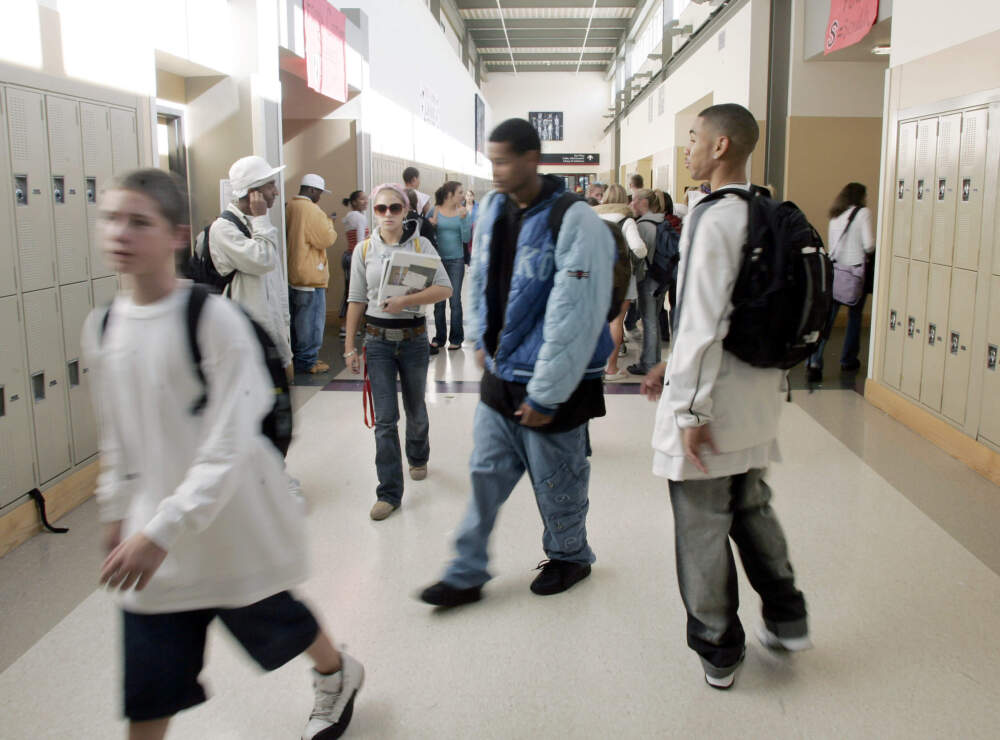Advertisement
Commentary
Racial bullying in schools is on the rise — including here in Mass.

At a tranquil pond on Cape Cod this summer, a white teenager invoked George Floyd’s name. But it wasn’t to support the Black Lives Matter movement — it was to torment a Black youth, mocking him as his white friend allegedly trying to drown him. Earlier this month, white students at Concord Middle School reportedly called a 13-year-old Black classmate a "monkey" and threatened to "whip [him] because he's Black."
Shocking as these incidents are, they should be a wake-up call to all of us, and particularly to schools. Reports of racial and identity-based bullying are increasing in Massachusetts — and will continue to rise unless we take proactive steps. Enacting school-based policies that specifically address identity-based bullying is a critical first step.
The Cape Cod and Concord incidents are, unfortunately, not outliers. Just in the last school year, students yelled a racial slur during prom at Hamilton-Wenham Regional High School. A student from Sudbury was called a racial slur while at a track meet in Wayland. And the list goes on.
As these examples show, sometimes perpetrators
Nationally, too, this kind of bullying is on the rise. In the United States, 20% of all K-12 students reported being bullied — with identity-based bullying as a leading factor. On average, students of color are disproportionately overrepresented among bullying victims. For example, Black students make up 37% of the bullied population, despite only being 15.1% of the school-age kids. And because students of color are less likely to report being bullied, these statistics are almost certainly an undercount.
... Black students in predominantly white schools are more likely to hear racial slurs used by classmates and feel socially excluded than kids in more diverse schools.
Why the increase in racial bullying of children? One cause is likely to be the adults around them. Nationwide, racial harassment and hate crimes have risen to historic levels in the past decade, so it is no surprise that behavior modeled outside of schools is increasingly finding its way into them. The persistent segregation of our schools is another contributing factor. For example, a recent study found that Black students in predominantly white schools are more likely to hear racial slurs used by classmates and feel socially excluded than kids in more diverse schools.
That’s a particular problem here in Massachusetts, where many school districts are over 80% white. In Greater Boston alone, at least eight districts have fewer than 10% Black or Latinx students. Because of these imbalanced student populations, kids of color are often isolated in their classrooms and at greater risk of bullying.
While any form of bullying is problematic, racial bullying is uniquely harmful. Studies show that students who face discrimination are about 25% more likely to be diagnosed with mental health conditions, and twice as likely to develop “severe psychological distress” than those who do not experience discrimination. This aligns with data on adults, which shows that people of color often experience worse outcomes when facing mental health issues, largely due to gaps in access to services. With an increase in racial harassment both inside and outside of schools, these disparities will continue to disadvantage students of color.
[S]chools need specific racial bullying policies to address identity-based harassment and its impact on students.
Although there are laws that address racial bullying, they are limited. Students enrolled in schools that accept federal funds are protected by Title VI of the Civil Rights Act of 1964, which prohibits discrimination based on race, color or national origin, and can file a complaint with the U.S. Department of Education. But federal investigations are slow, and not always adequate to address the day-to-day realities that students of color face. Racial bullying can also implicate criminal laws. John Sheeran, the white teenager who allegedly tried to drown the 15-year-old Black boy at Goose Pond in Chatham, is now charged with attempted murder and assault.
What is urgently needed are school-based approaches that address the unique nature of racial bullying. Schools are well-situated to proactively prevent racial bullying, impose meaningful consequences when it occurs, and provide mental health support as needed. Reform should start with specific racial bullying policies.
In Massachusetts, the law requires each school district to develop a bullying prevention plan. But though such plans must include a recognition that certain students are more vulnerable to bullying, they are not required to specifically address racial bullying — either how to prevent it or what to do when it occurs. Just as the criminal legal system has laws against hate crimes to address the unique nature of crimes motivated by racial animus, schools need specific racial bullying policies to address identity-based harassment and its impact on students.
When the attorney representing the Cape Cod perpetrator spoke to the press, he tried to downplay the near-drowning and invocation of George Floyd, by characterizing it as horseplay. That kind of framing is dangerous. It reduces life-threatening interactions to mere youthful indiscretions — and it puts kids of color in jeopardy.

